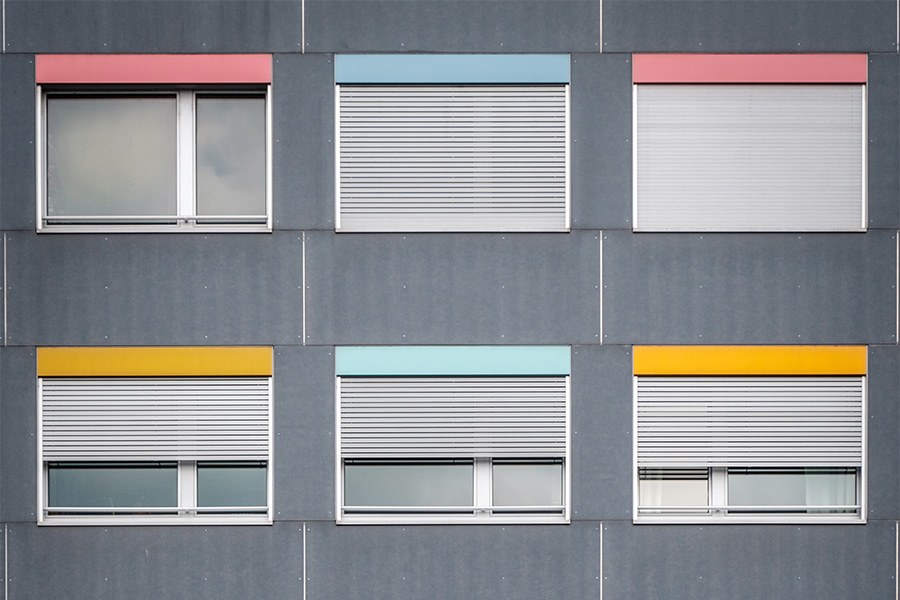When the heat hits, use sustainable means to cool your home

How to cool down a house without using expensive energy? What are the so-called passive cooling means? Can they really challenge cooling heat pumps, electrical fans, and air conditioning?
In cold climates like in Finland houses are built with insulation. This is a passive way to keep the cold out and heat in during winter. During summer the same insulation will keep the heat out unless the sun shines in through windows. This is why traditional Mediterranean houses are built of white painted stone with small windows covered with shutters to keep the heat out in summertime - but they can be cold in winter.
“To cool a home, it is crucial to prevent the heat coming in, and to be able to remove the heat that does enter. In Finland, adaptations that reduce solar gains are effective because the sun is up for so long, and the angle of the sun is very low during the mornings and evenings,” says Jonathon Taylor, Associate Professor (tenure track) of Urban Physics.
Simple ways to keep homes cool are keeping the doors and windows closed and shaded and not warming up the sauna or using dishwasher, oven, or washing laundry during heat peaks. If the temperature drops during evenings and nights, windows and doors can be opened to enable ventilation to get rid of the heat. The modern tendency to build houses with huge windows that cannot be opened challenges this option.
Other passive cooling options such as awnings, blinds, curtains, and external sun blinds also block solar radiation from entering the house.
“These give residents a feeling of control. When they can control their environment, it creates sense of belonging to their home,” says Postdoctoral Researcher Raúl Castaño-Rosa.

Rewilding cities makes them more resilient
The researchers have a message to Finnish decision makers and politicians in times on climate crisis: think more about the surrounding urban areas. For example, shading greenery and reflective surfaces can reduce the urban heat island (UHI) effect. This refers to a situation where an urban area is much warmer than its surrounding rural areas due to human activities.
“We should retain and bring more natural vegetation to urban areas that reduces the UHI effect, provides shading to people and buildings, and promotes citizens’ health and wellbeing. In other words, rewilding urban areas helps to promote a more resilient society,” says Professor Sofie Pelsmakers, leader of the ASUTUT Housing Design research group.
Cities can also provide citizens free and safe oases like air-conditioned libraries that can be used as shelters in heatwaves.
According to Krista Scharlin’s recent Master’s thesis, decreasing urban overheating can be achieved by adding to urban greenery and reducing heat storing materials. Scharlin researched courtyards in Tampere during the August heatwave in 2022.

Use cooling devices only when needed
Many studies based on building physics models show that air conditioners or heat pumps will be the only solution that will enable dwellings to keep cool by 2050-2080. These studies define overheating according to existing metrics e.g., the number of degree-hours above a temperature threshold.
The researchers underline that these metrics are used in Finland without considering the fact that people tend to adapt to heat over time.
“When temperatures are initially high, you feel hot. If they remain high for a period of a few days, you tend to adjust to it. In an air-conditioned building you are not exposed to the heat and the adaptation does not happen,” says Taylor.
Taylor thinks there is no point in arguing about how cooling should be done. In general, as little energy as possible should be used for cooling. This means, for example, using air conditioning or cooling only above a certain temperature threshold, not 24/7. At best the energy used should come from renewable energy sources, such as solar power.
The researchers are worried about people buying and installing inefficient cooling systems in their homes without giving any thought to passive measures. If this continues, there may be consequences for carbon emissions.
“We already see a spike in electrical consumption in the summer during hot days from air conditioning in Finland, despite a very small minority of households having them,” Taylor says.
“I am not against heat pumps. But I think more needs to be done at the design stage to minimize the problem and prioritize the implementation of passive solutions. This way we could reduce the need for technical solutions,” he adds.
Taylor recommends air conditioning in buildings where the very heat-vulnerable stay, for example in hospitals and residential homes for the aging people.
Current research related to cooling of houses:
https://researchportal.tuni.fi/en/publications/passive-mitigation-of-overheating-in-finnish-apartments-under-cur
Text: Anna Aatinen
Contact person
Jonathon Taylor
Associate Professor, Urban PhysicsHow to cool your home sustainably
- Close the blinds or curtains for a day. Use awning blinds, reflective surfaces or other means to shade the sun side of your house.
- Open windows and doors and use cross ventilation when outdoors temperature is lower than indoors.
- Use your cooler, air conditioner or heat pump only when room temperature exceeds a certain threshold (i.e., 25°C). Set the device to a couple of degrees lower than current room temperature. This way you will not get cold, and your energy consumption stays reasonable.
- Choose renewable energy such as wind, solar or water energy to power your cooling technology.
- When planning a new house, pay attention to the directions, the size and opening of the windows, and the trees or other greenery on courtyard.





